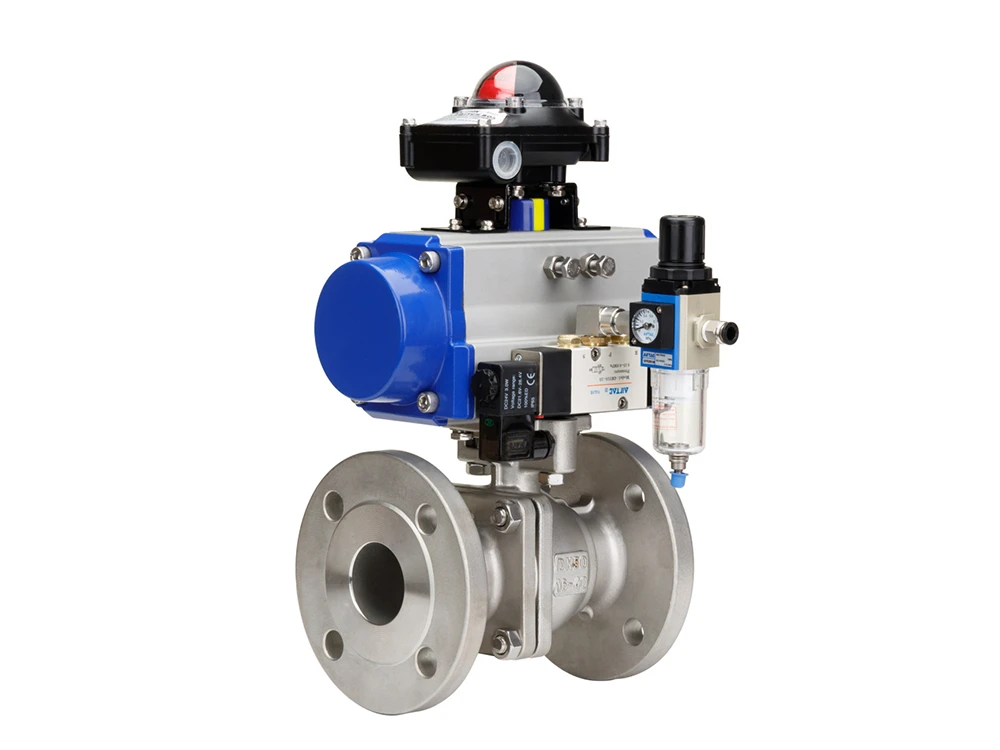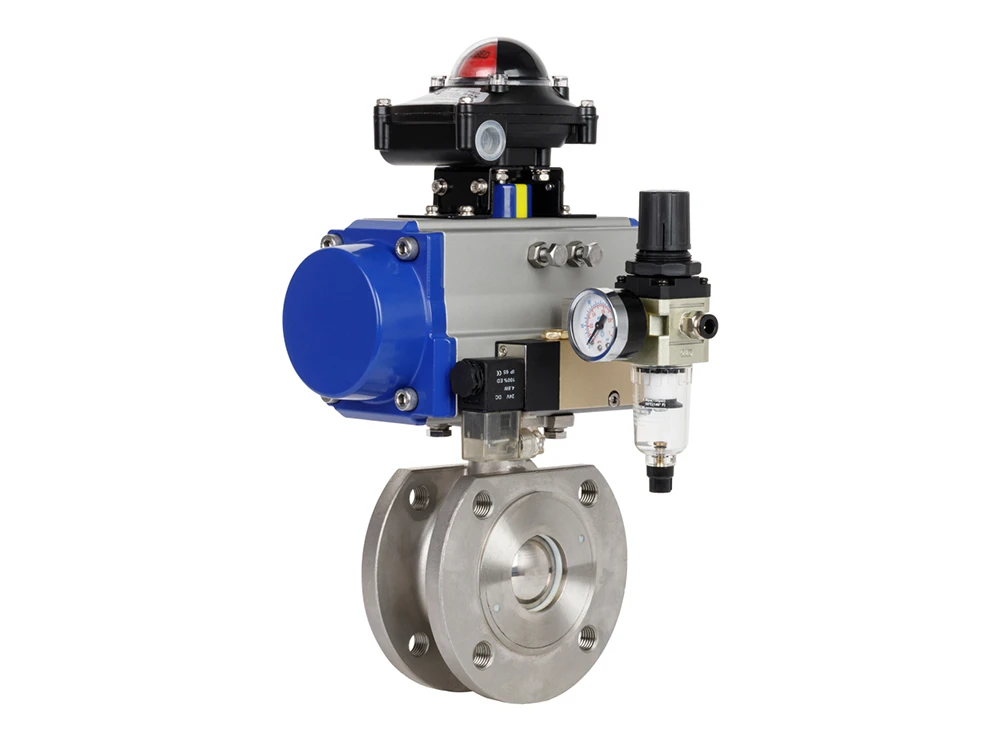Advantages and Disadvantages: Assessing the Slip Ball Valve in Comparison to the Ball Valve for Peak Performance and Efficiency
Overview
A brief discussion is presented on the significance of opting for the correct valve to achieve optimal performance and efficiency in fluid control systems.
The appropriate valve is essential for fluid control systems to attain optimal performance and efficiency. Valves are in charge of governing the fluid flow in a pipeline setup. If an incorrect valve variety is picked, it can result in inefficiencies, elevated energy expenditures, and possible safety perils. Multiple aspects need to be considered during valve selection, such as pressure rating, temperature, flow rate, and the particular usage it is meant for. Through meticulous assessment of these elements and choosing the correct control valve for the fluid control system, one can guarantee that the system functions at its peak performance while curtailing costs and risks.
Present slip ball valve versus ball valve as two prevalent choices for such systems.
Fluid control systems commonly present two options: slip ball valves and traditional ball valves. Slip ball valves belong to the category of ball valves and possess a distinct mechanism. In this mechanism, a ball with a central hole is placed perpendicular to the fluid stream. This configuration enables low torque operation and renders them appropriate for high-pressure scenarios. Conversely, traditional ball valves have a straightforward design. There is a ball-shaped valve within a pipe, and it rotates to either permit or impedes the flow. They are renowned for their cost-effectiveness and simplicity in maintenance. It is essential that we meticulously assess the pros and cons of both valve varieties to identify the most suitable one for a specific application.
Preview the main advantages and disadvantages of each valve type which will be covered in the post.
In this blog post, we are going to delve into the crucial advantages and disadvantages of slip ball valves as well as traditional ball valves. Slip ball valves boast several benefits. Their low torque operation and compact size are notable features. Thanks to these qualities, they are highly suitable for high-pressure applications. Nevertheless, it should be noted that they tend to be more costly compared to traditional ball valves. On the other hand, traditional ball valves are recognized for their simple design, which not only makes them budget-friendly but also ensures ease of maintenance. However, they might not perform as well in high-pressure applications and demand higher torque for operation. By grasping the pros and cons of each type of valve, you will be able to make a well-informed choice when it comes to selecting the appropriate valve for your fluid control system.
Slip Ball Valves
Elucidate the meaning of slip ball valves and expound on the distinctions they possess in comparison with traditional ball valves.
Slip ball valves represent a particular kind of ball valve which employs a distinctive mechanism. In this mechanism, a ball having a hole at its center is oriented perpendicularly to the fluid’s path. When the valve is in an open state, the fluid is able to pass through the hole within the ball. By rotating the ball through 90 degrees, the fluid flow is halted, thereby closing the valve.
Traditional ball valves are famed for their uncomplicated design, inexpensive nature, and effortless maintenance.
Traditional ball valves, in contrast, are composed of a ball-shaped valve element within a pipe. This ball rotates to either enable or limit the fluid flow. When the valve is opened, the fluid travels through the interior passage of the ball. Rotating the ball by 90 degrees stops the fluid flow and shuts the valve.
Traditional ball valves are widely recognized for their straightforward design, which leads to a lower cost and facilitates easy maintenance. However, they might not be as ideally adapted for high-pressure circumstances and demand a greater amount of torque for their operation.
Examine the principal benefits of slip ball valves, including their low torque operation, compact size, and fitness for high-pressure applications.
Slip ball valves possess several crucial advantages. Among the most prominent merits of such valves is their low torque operation. Merely rotating the ball 90 degrees suffices to cease the fluid flow and close the valve. Traditional ball valves are renowned for their affordability and straightforward maintenance. In comparison, the compact dimensions of slip-ball valves imply that they demand less material, thereby presenting a more economically viable alternative. Another edge of slip ball valves lies in their capacity to manage high-pressure applications, which renders them applicable in a diverse range of industries. In general, slip ball valves offer several essential benefits that render them a compelling choice for fluid control systems.
Highlight any possible drawbacks or limitations of slip ball valves, for example, their relatively higher cost in contrast to traditional ball valves.
Although slip ball valves present numerous advantages, there are still certain potential drawbacks that merit attention. One of the principal disadvantages is associated with their cost. Slip ball valves are more expensive on account of their unique design and the materials utilized. They might not be appropriate for lower-pressure applications since achieving an effective seal can be a challenge. Additionally, if debris or sediment accumulates within the valve, it can hurt its performance and lead to leakage. Notwithstanding these limitations, slip ball valves continue to be a significant option for fluid control systems that demand low torque operation, a compact size, and high-pressure capabilities.
Traditional Ball Valves
Ball valves constitute a frequently employed type of valve within fluid control systems. Their construction features a straightforward design wherein a ball-shaped valve is situated inside a pipe and rotates to either permit or inhibit the flow of fluid. When the valve is in an open position, the fluid traverses through the interior cavity of the ball. By rotating the ball through 90 degrees, the fluid flow is interrupted, thereby closing the valve. Traditional ball valves are widely acknowledged for their economical cost and effortless maintenance. The uncomplicated design of these valves precludes the accumulation of debris, rendering them highly suitable for clean application scenarios. However, traditional ball valves are not well-suited for high-pressure environments and necessitate a greater amount of torque in comparison to slip ball valves. In summary, traditional ball valves present an outstanding alternative for a multitude of fluid control systems, especially those with relatively lower pressure requisites.
Selecting the Right Valve for Your Application
It is essential to take into account the advantages and limitations of each valve variety. Slip ball valves prove to be highly suitable for applications that demand low torque operation as well as the ability to handle high pressure. On the other hand, traditional ball valves are a cost-efficient choice for low-pressure systems.
When making a selection of a valve, one must consider multiple factors such as the type of fluid, its temperature, the pressure it will be subjected to, the size of the valve, and its location. By carefully weighing the pros and cons of different valves, it is possible to ensure optimal performance, enhanced efficiency, guaranteed safety, and cost-effectiveness in the fluid control system.
Summary
Traditional ball valves are noted for their cost-efficiency and simplicity in maintenance. Nevertheless, they might not be well-suited for high-pressure systems. The selection of the appropriate valve hinges on the specific requirements of the application, such as the nature of the fluid, its temperature, the pressure levels, the size of the valve, and its location. By factoring in these aspects, dependable performance and peak efficiency can be assured. However, as previously mentioned, their unsuitability for high-pressure systems remains a crucial consideration. The choice of the right valve is a complex decision that demands a comprehensive assessment of all these elements to guarantee the smooth and effective operation of the fluid control system.





